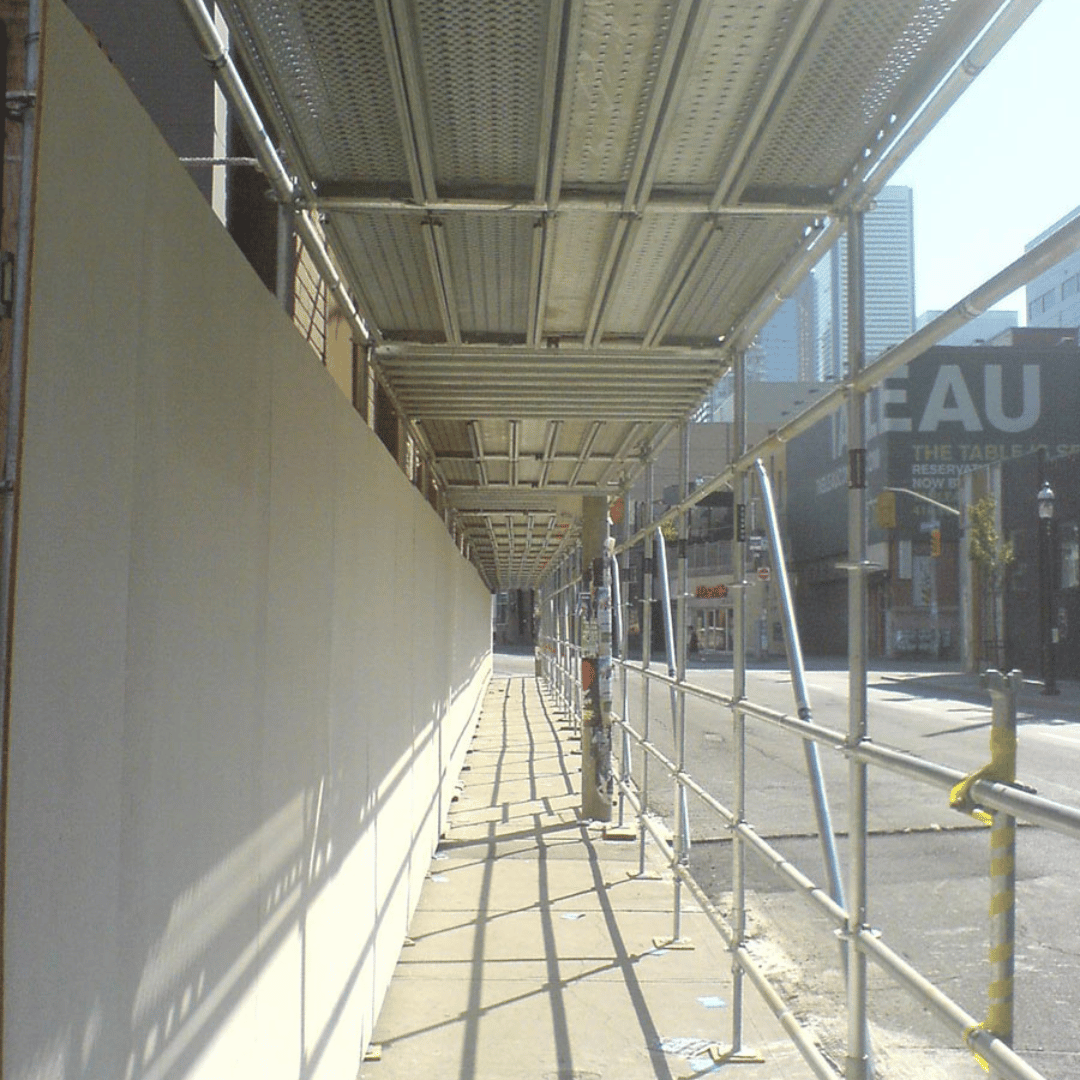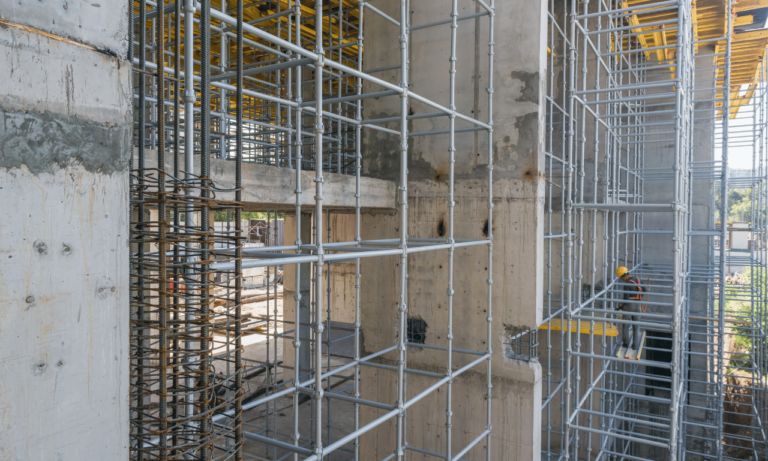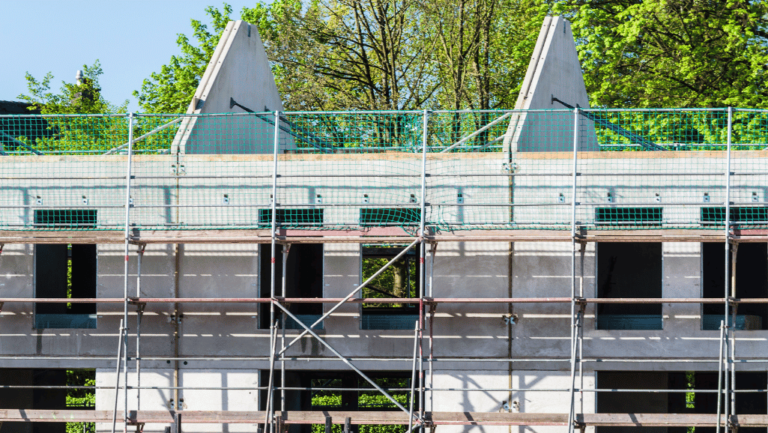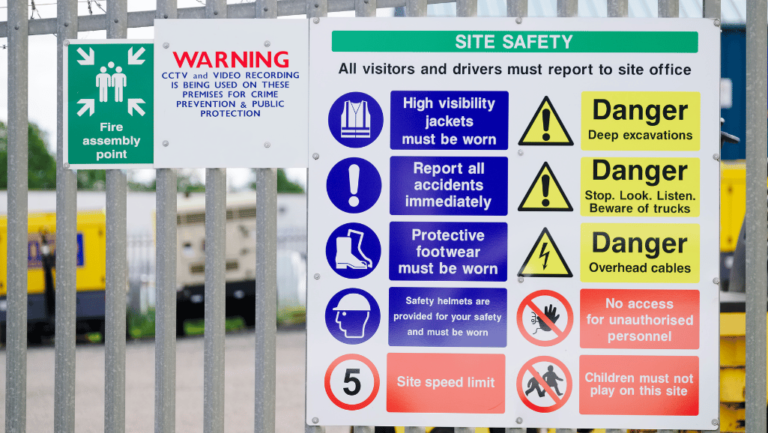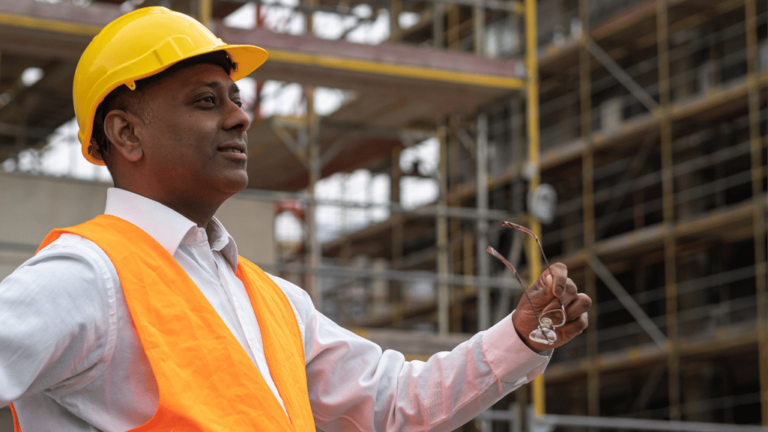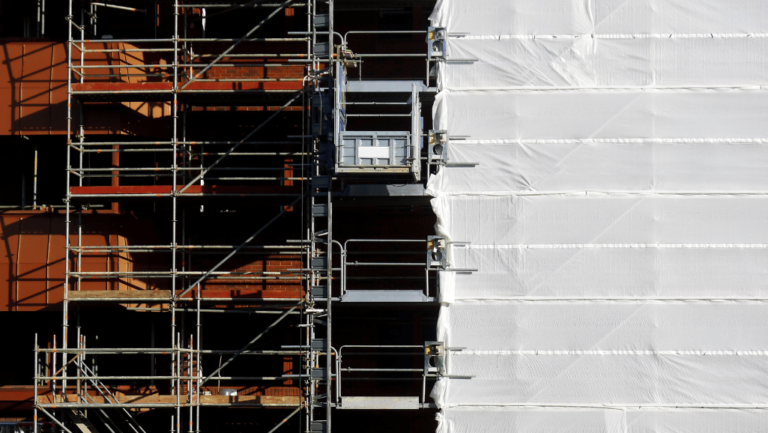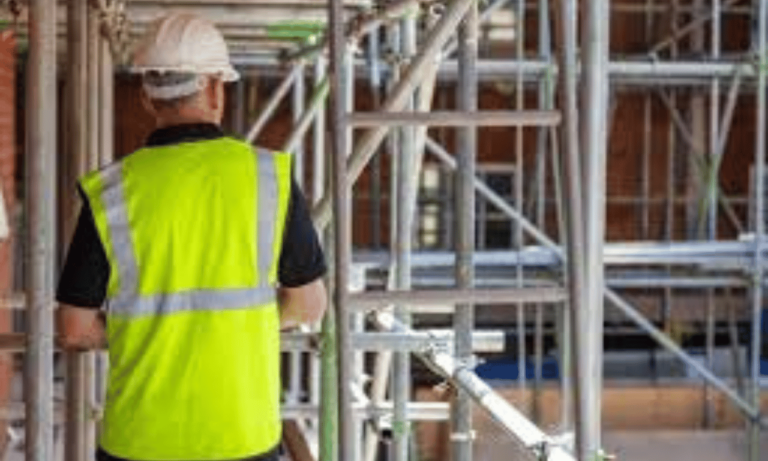Phone:
(+65)8319-0742
When it comes to working at heights, safety should always be the top priority. One crucial aspect of ensuring the well-being of workers in scaffolding is providing adequate overhead protection. Whether it’s protecting against falling objects or debris, having robust safety measures in place is essential to prevent accidents and maintain a secure working environment.
In this article, we will explore tips for achieving safe overhead protection in scaffolding. From understanding scaffolding safety guidelines to implementing effective protection systems, we’ll cover all the necessary steps to enhance safety on construction sites.
Key Takeaways:
- Ensure safe working conditions in scaffolding by implementing proper overhead protection measures.
- Comply with scaffolding safety guidelines and regulations to minimize risks and accidents.
- Implement effective scaffolding protection systems to enhance safety and prevent falling objects or debris.
- Key components, such as guardrails, toe boards, and debris nets, play a crucial role in overhead protection.
- Regular inspection and maintenance of overhead protection systems are vital to ensure continued safety.
Understanding Scaffolding Safety Guidelines
Complying with scaffolding safety guidelines is of utmost importance in ensuring the well-being of construction workers and minimizing risks on job sites. By adhering to the relevant regulations and standards governing overhead safety in construction, companies can create a secure environment for their workers and maintain a high level of safety at all times.
Understanding and implementing scaffolding safety guidelines involves a comprehensive approach to risk management. This includes the proper selection, erection, use, and dismantling of scaffolding systems. Adhering to scaffold safety regulations not only protects workers from potential accidents but also ensures compliance with legal requirements.
One crucial aspect of scaffold safety is maintaining structural integrity. Scaffold systems must be sturdy and adequately designed to bear the weight and provide a secure platform for workers. In addition, the appropriate safety equipment, such as guardrails and toe boards, should be utilized to prevent falls and protect workers from potential hazards.
Regular inspections play a vital role in identifying potential safety hazards and addressing them promptly. Inspections should be conducted before each work shift and after any alterations or additions to the scaffold structure. By consistently monitoring the scaffolding system, companies can identify and rectify any issues before they pose a risk to workers’ safety.
Ensuring overhead safety in construction also includes providing workers with the necessary training and education. Proper training on scaffold usage, erection, and dismantling procedures is essential for preventing accidents and minimizing the likelihood of injuries. Workers should be aware of the specific requirements outlined in scaffold safety guidelines and the actions they need to take to maintain a safe working environment.
By understanding and implementing scaffolding safety guidelines, companies can create a culture of safety and protect their workers from potential hazards. Compliance with scaffold safety regulations is not only a legal requirement but also a moral responsibility in safeguarding the well-being and lives of those working at heights.
Implementing Effective Scaffolding Protection Systems
When it comes to ensuring overhead safety in scaffolding, implementing effective scaffolding protection systems is crucial. These systems provide essential protection against falling objects and debris, minimizing the risk of accidents and injuries on construction sites.
Different Solutions and Technologies
There are various scaffolding protection systems available that cater to different construction needs. These solutions and technologies are designed to provide reliable overhead protection and enhance safety measures.
- Scaffold Enclosures: These flexible and durable enclosures effectively shield the scaffolding from external elements, such as wind and weather conditions. They can also prevent falling objects and debris from reaching the scaffolding platform.
- Debris Nets: Installing debris nets around scaffolding structures acts as a barrier, preventing construction materials and debris from falling onto workers or passersby below. These nets are made from high-strength materials and are capable of capturing and containing debris effectively.
- Guardrail Systems: Guardrails play a vital role in providing collective fall protection for workers on scaffolding platforms. These systems are designed to create a secure barrier around the platform’s edge, preventing accidental falls and ensuring the safety of workers at heights.
- Toe Boards: Toe boards are installed at the edge of scaffolding platforms to prevent tools, equipment, or materials from being accidentally kicked or pushed off the platform. They serve as an additional barrier against falling objects, enhancing overall safety.
By implementing these scaffolding protection systems, construction companies can significantly reduce the risk of accidents and injuries, ensuring a safer working environment for their workers.
Visual Representation of Scaffolding Protection Systems
To provide a visual representation of the various scaffolding protection systems discussed, the table below highlights their key features and benefits.
| Scaffolding Protection Systems | Key Features | Benefits |
|---|---|---|
| Scaffold Enclosures | Flexible and durable | Protection against wind, weather, and falling objects |
| Debris Nets | High-strength materials, captures and contains debris | Prevention of falling construction materials and debris |
| Guardrail Systems | Collective fall protection for workers | Creation of a secure barrier on scaffolding platforms |
| Toe Boards | Prevents accidental dropping of tools and materials | Enhanced barrier against falling objects |
By incorporating these scaffolding protection systems into their operations, construction companies can demonstrate their commitment to worker safety and compliance with scaffolding safety guidelines.
Key Components of Overhead Protection

When it comes to ensuring safe overhead protection in scaffolding, proper installation of key components is vital. These components play a crucial role in creating a secure working environment for construction workers. Let’s explore the key components that should be in place:
1. Guardrails
Guardrails are an essential part of overhead protection in scaffolding. They provide a barrier around the working area, preventing workers from accidental falls. Guardrails should be installed around all open sides of the scaffolding platform, including the edges, to ensure comprehensive protection. These safety features can be made of durable materials such as metal or sturdy plastic, compliant with the specified safety regulations.
2. Toe Boards
Toe boards are horizontal barriers that are installed along the edges of the working platform. They prevent tools, equipment, or debris from falling off the scaffolding and posing a hazard to workers below. Toe boards should be securely fastened to the scaffolding structure and be strong enough to withstand any impact. Ensuring the proper installation of toe boards is an essential safety measure in overhead protection.
3. Debris Nets
Debris nets are an effective solution for preventing falling objects or debris from posing a risk to workers. They can be attached to the scaffolding structure at various intervals to catch any objects that may accidentally fall from the platform. Debris nets should be made from durable, tear-resistant materials that are capable of safely containing any potential debris. They should be regularly inspected for any signs of wear or damage to ensure their continued effectiveness.
Incorporating these key components into the design and setup of scaffolding systems significantly enhances the overhead protection provided. Properly installed guardrails, toe boards, and debris nets work together to minimize the risk of accidents and injuries, promoting a safer working environment on construction sites.
Regular Inspection and Maintenance of Overhead Protection
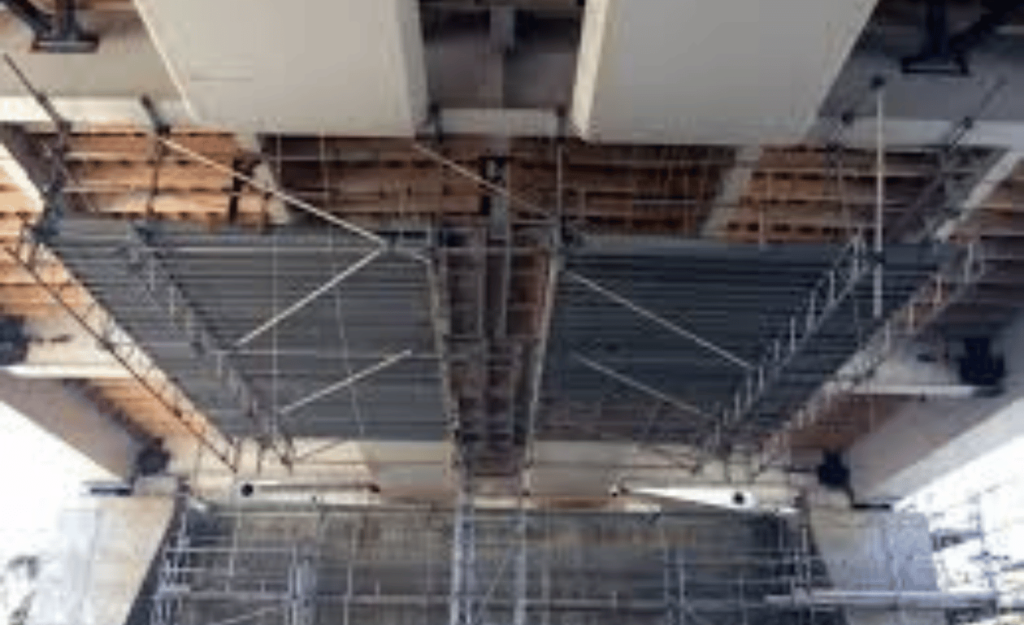
Regular inspection and maintenance of overhead protection systems are essential to ensure the continued safety and effectiveness of scaffolding constructions. By following proper inspection procedures and maintenance routines, construction sites can minimize potential hazards and maintain a secure working environment.
Scaffolding safety measures dictate that inspection should be conducted at regular intervals, taking into account the specific requirements outlined in the scaffolding safety guidelines. These guidelines provide comprehensive instructions on how to inspect and maintain overhead protection systems to ensure compliance with safety standards.
Inspection Procedures
During inspections, it is crucial to thoroughly examine all components of the overhead protection system, such as guardrails, toe boards, and debris nets. Inspectors should carefully check for any signs of damage, wear, or looseness that may compromise the system’s integrity.
Scaffold overhead protection should be inspected for stability, ensuring it can withstand any potential impact or external forces. Inspectors should pay special attention to the anchor points, connections, and supporting structures.
Regular inspections should also assess whether the overhead protection system is adequately installed and meets the necessary standards for fall protection. This includes verifying the correct placement and attachment of guardrails, toe boards, and debris nets to prevent the risk of falling objects.
Maintenance Routines
Once the inspection is complete, any identified issues or defects should be promptly addressed through proper maintenance procedures. This may involve repairing or replacing damaged components, tightening loose connections, or reinforcing the overall structure of the overhead protection system.
It is crucial to adhere to the manufacturer’s recommendations and industry best practices when carrying out maintenance tasks. This ensures that the overhead protection system remains in optimal condition and continues to provide effective fall and debris protection.
Regular maintenance routines must be documented and scheduled to ensure timely intervention and prevent potential safety hazards. Construction site supervisors should keep an organized record of inspections, maintenance actions taken, and any ongoing maintenance requirements.
By prioritizing regular inspection and maintenance of overhead protection systems, construction sites can prioritize worker safety and comply with scaffold safety regulations. Proactive measures contribute to a safer work environment, while reducing the risk of accidents and ensuring compliance with safety guidelines.
Conclusion
Ensuring safe overhead protection in scaffolding is crucial for the well-being of construction workers and the prevention of accidents. Throughout this article, we have highlighted the key points that construction sites need to consider to achieve a safe working environment.
First and foremost, it is imperative to comply with scaffolding safety guidelines and regulations. Understanding and implementing these guidelines not only helps to protect workers but also ensures compliance with industry standards.
Additionally, the use of effective scaffolding protection systems plays a pivotal role in mitigating hazards. By installing guardrails, toe boards, and debris nets correctly, construction sites can prevent falling objects and debris, thus enhancing overall safety.
Regular inspection and maintenance are also essential components of overhead protection in scaffolding. By conducting routine checks and addressing any issues promptly, construction sites can guarantee the continued effectiveness of their protection systems, reducing risks and promoting a safe working environment.
FAQ
What are some essential safety measures for overhead protection in scaffolding?
To ensure safe overhead protection in scaffolding, it is crucial to install guardrails, toe boards, and debris nets. These components create a secure working environment by preventing objects from falling and causing potential hazards.
What are the guidelines and regulations for scaffolding safety?
Understanding and complying with scaffolding safety guidelines is of utmost importance. Regulations and standards are in place to govern overhead safety in construction. By adhering to these guidelines, you can ensure compliance and minimize the risks associated with scaffolding work.
What types of scaffolding protection systems can be implemented for overhead safety?
Various scaffolding protection systems can be implemented to enhance overhead safety. These solutions include safety nets, guardrails, and catch platforms, among others. It is essential to choose the appropriate system based on the specific requirements of your construction site.
What are the key components of overhead protection in scaffolding?
The key components of overhead protection in scaffolding include properly installed guardrails, toe boards, and debris nets. These features provide an additional layer of safety by preventing falling objects and debris from posing a threat to workers below.
Why is regular inspection and maintenance of overhead protection systems necessary?
Regular inspection and maintenance of overhead protection systems are crucial to ensure their continued effectiveness and safety. By conducting routine checks and implementing maintenance routines, any potential issues or damage can be identified and addressed promptly, minimizing risks on the construction site.

